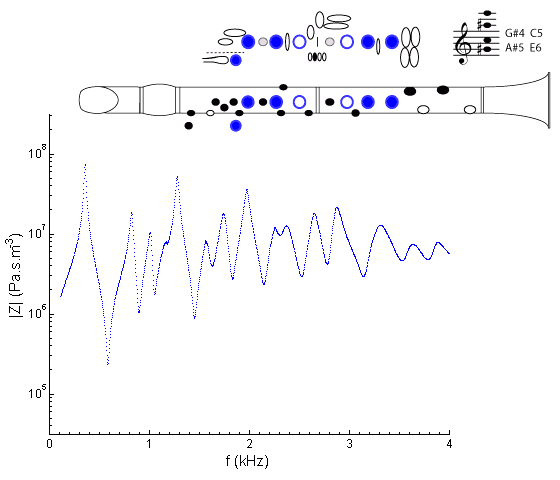| Acoustics of the saxophone |
Bb saxophone |
multiphonic
|
|

|
Fingering Acoustic schematic Non-specialist introduction
to acoustic impedance Notes are the written pitch. |
Here, the first open hole is the (small) trill key. With the considerable cross fingering, this could be regarded as a tone hole that produces the note G#4. The C5, on the other hand, may be considered as produced by the second resonance of a modified version of the fingering for F3, with various register holes. The A# might be regarded as the second resonance of the bore terminated by the open D hole, again with a register hole, and some cross fingering. As for E6, which is above the cut-off frequency, the entire bore is involved and one could say that any open tone holes operate not only as register holes, but as minor adjustments to the frequency of the desired resonance.

Sound spectrum
of a Bb saxophone
played using fingering for the multiphonic G#4, C5, A#5 and E6.
For more explanation, see
Introduction to saxophone acoustics
![]()
![]() You can hear the multiphonic G#4, C5, A#5 and E6
played.
You can hear the multiphonic G#4, C5, A#5 and E6
played.
|
Contact:
Joe Wolfe
/ J.Wolfe@unsw.edu.au |